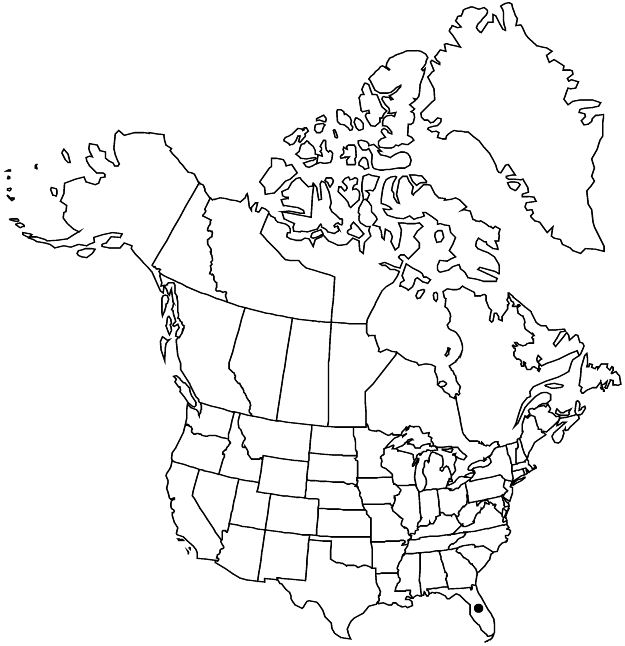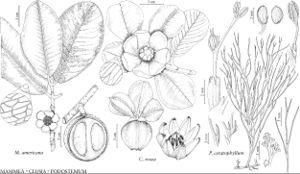Difference between revisions of "Clusia rosea"
Enum. Syst. Pl., 34. 1760.
FNA>Volume Importer |
FNA>Volume Importer |
||
| Line 55: | Line 55: | ||
|publication year=1760 | |publication year=1760 | ||
|special status=Selected by author to be illustrated | |special status=Selected by author to be illustrated | ||
| − | |source xml=https://jpend@bitbucket.org/aafc-mbb/fna-data-curation.git/src/ | + | |source xml=https://jpend@bitbucket.org/aafc-mbb/fna-data-curation.git/src/f6b125a955440c0872999024f038d74684f65921/coarse_grained_fna_xml/V6/V6_109.xml |
|genus=Clusia | |genus=Clusia | ||
|species=Clusia rosea | |species=Clusia rosea | ||
Revision as of 20:14, 24 September 2019
Plants free-standing or epiphytic or epilithic, 0.1–10(–18) m. Leaves: petiole 10–20 mm; blade obovate, 7–15(–23) × 6.4–15 cm, base ± cuneate, apex rounded to emarginate. Inflorescences: peduncle 2 mm; bracts connate. Flowers: staminate unknown; pistillate: sepals in unequal pairs, spatulate to obovate, usually cucullate, to 1.5 × 2 cm; petals obovate-clawed, 3–4 cm, waxy; [staminodes connate, forming resinous cupule]; ovary globose; stigmas 6–9(–12). Capsules yellow, flushed red, globose, 5–8 cm diam.
Phenology: Flowering summer.
Habitat: Disturbed sites, near beaches
Elevation: 0–10 m
Distribution

Fla., Mexico, West Indies, Central America, South America.
Discussion
Clusia rosea is widely cultivated in Florida and is established in Broward and Miami-Dade counties; it is native in the Keys (Monroe County). In the flora area, staminate flowers are not known; C. rosea may be apomictic (B. Maguire 1976).
Selected References
None.
